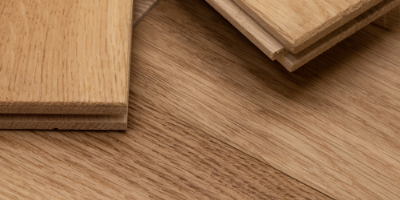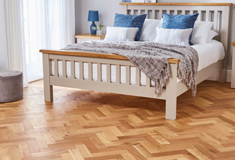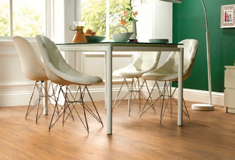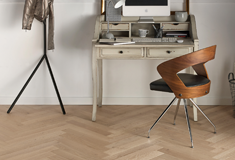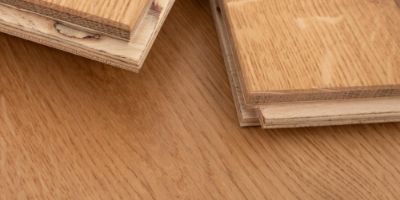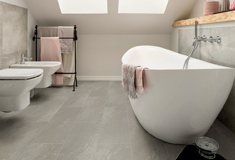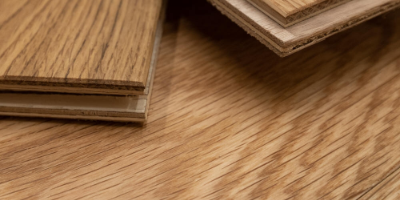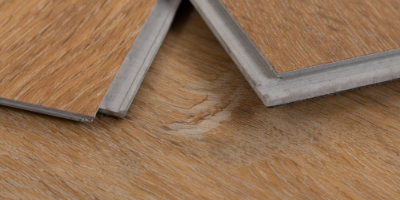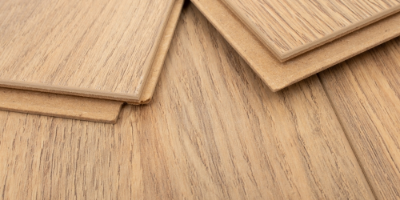Environmentally Friendly Flooring: What’s the Best Option?
With climate change making headlines across the world, sustainability is a hotter topic than ever. This rising concern for the health of our planet has led many people to re-evaluate how they decorate their living spaces, and so, it’s no surprise that questions are being raised about environmentally friendly flooring.
As floors are either made from natural sources like wood or constructed from man-made materials, it’s often thought that all flooring is detrimental to the environment. However, there are plenty of environmentally friendly flooring options available. Explore your options below to find the best choice for your home and our planet.
What factors make flooring environmentally friendly?
Materials
One factor that determines how environmentally friendly flooring is is the materials used to create it and specifically, where those materials were sourced. With solid and engineered wood flooring, for example, if the wood is sourced through a supplier that practises responsible forestry, the resulting flooring will be considered more environmentally friendly than wood obtained from less responsible suppliers.
Wood is a renewable resource, meaning it can be continuously reproduced. In responsible forestry, any trees used for flooring are immediately replaced to ensure the area isn’t depleted of trees. As younger trees can absorb more carbon dioxide and produce more oxygen than older ones, this process helps improve atmospheric outputs, and therefore is beneficial to the environment.
Lifespan
The lifespan of the floor itself is another factor that affects how environmentally friendly flooring is. For example, a vinyl floor that lasts 10 years will be much less sustainable than one that’s still in good knick 20 years later.
As with any item, the sooner a floor wears out, the sooner it’ll need replacing and the more manufacturers there’ll be producing carbon emissions that contribute to pollution. Choosing a high-quality, well-made floor will reduce the chance of having to replace your flooring prematurely and therefore will be a more environmentally friendly investment.
Production
People often think that wood harvesting uses unthinkable amounts of energy, but the reality is that the production of wood flooring takes five times less energy to produce than one tonne of cement does.
If you're looking to lower your carbon footprint with environmentally friendly flooring, your best bet is to choose a floor that’s manufactured in the UK or a close neighbouring country to avoid adding to fuel emissions during the delivery process.
Environmentally friendly flooring options
Now that you know what makes a floor sustainable, you’re probably wondering which flooring options are the most environmentally friendly.
Solid Wood Flooring
While some wood floors are arguably more sustainable than others, solid wood floors are a long-term investment that prove their worth, as they’ll likely outlive even yourself and your property. Other flooring types such as carpets, for example, would need replacing more than once in your lifetime costing you time, money and likely increasing your carbon footprint as a result.
Therefore, wood flooring is a great environmentally friendly choice and in some cases is fully sustainable, helping you to create a carbon footprint-conscious home with style.
Engineered Wood Flooring
As with solid wood, engineered wood flooring will last for decades if you take care of it properly. Over time it may start to look a little worse for wear as scratches, scuffs and marks build up, but these can easily be sanded away, leaving your floor looking good as new.
Often the process of sanding and refinishing can be repeated multiple times to extend the lifespan of your floor, and it’s thanks to this that engineered wood flooring is considered an environmentally friendly option.
Bamboo Flooring
Other sustainable flooring options include bamboo and cork. Bamboo is a plant that renews and regenerates rapidly; typically within three to five years. Durable and long lasting, bamboo flooring is an ideal choice for an environmentally friendly home.
Cork Flooring
Similarly, cork renews at a fast pace and when properly harvested, it takes just 10 years to replenish. Due to this, it’s considered one of the top eco-friendly materials for speedy reproduction. In addition, some types of cork flooring are made from recycled materials such as wine bottle corks, making them even more environmentally friendly.
Have Your Say
Follow us on Instagram for the latest news and discussions. We’re always keen to hear what you’ve got to say!

